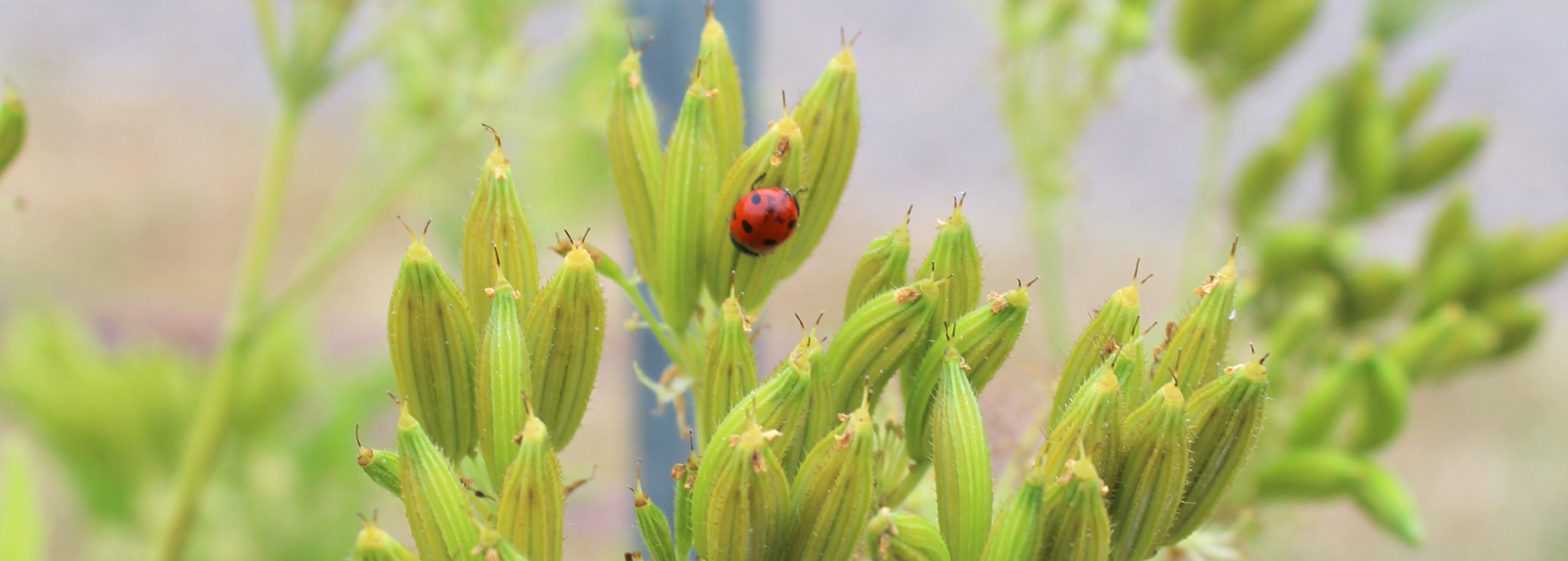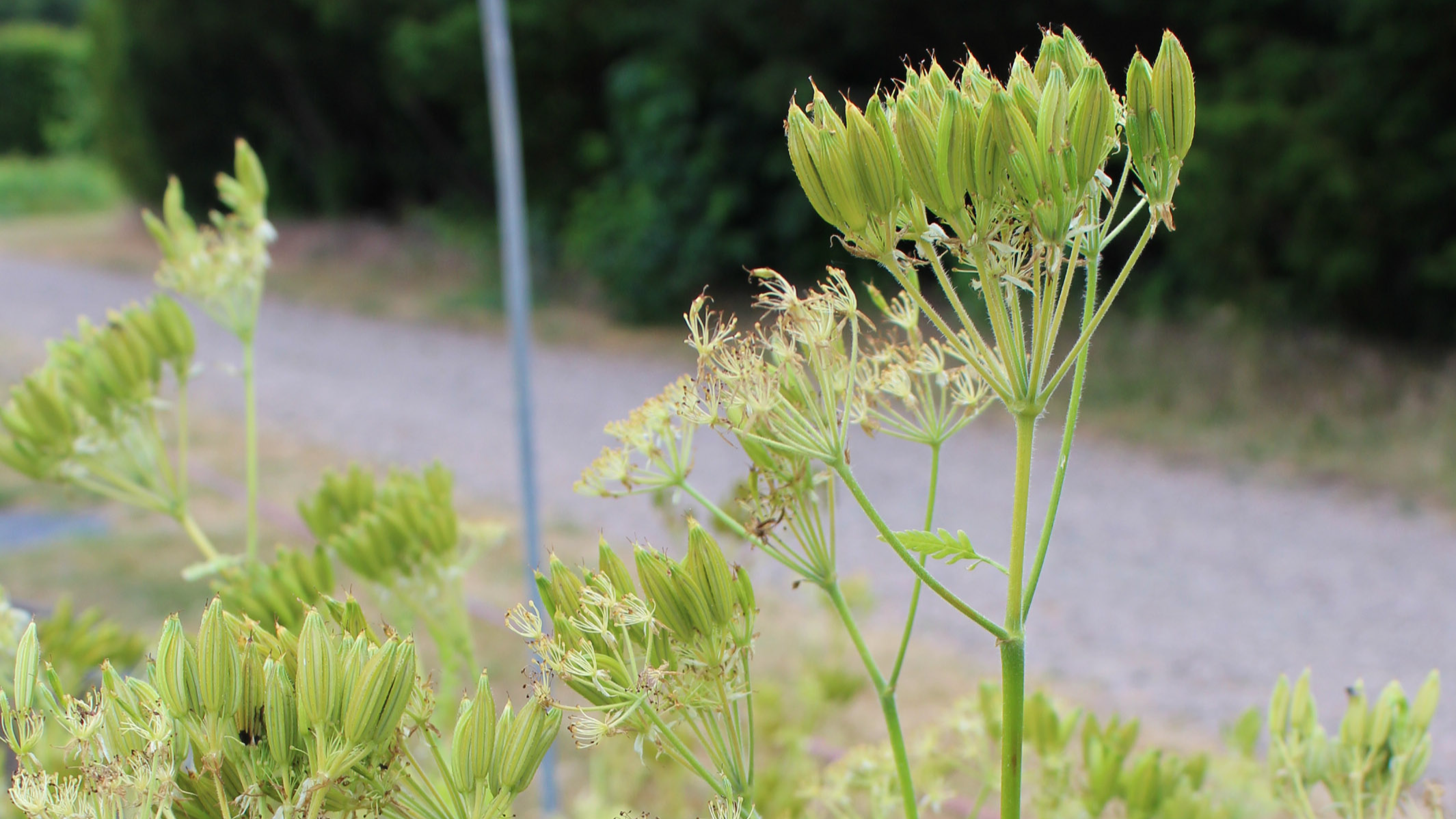
Myrrhis odorata (sweet cicely)
Myrrhis odorata is a perennial, native to the mountains of central- and southern Europe but introduced in other places. The species can grow up to 100–200 cm and will flower and produce seeds the second year, focusing on leaves its first year. The flowers are cream-white forming large umbels. The name odorata meaning scented in Latin, is a good description of the plant. Leaves are softly hairy and pleasantly aromatic when crushed. The whole plant is edible and has a sweet taste of anis seed and licorice and has been used as a vegetable or herb.
The inflorescence should be cut down for obtaining the best flavor if harvesting leaves. The species has also been used as a medical plant, and the whole plant is carminative and expectorant, thus used to ease stomach problems, improve digestion and treat cough. In addition, it has been used to remedy gout and soothe wounds. The root is antiseptic. In the past, seeds and leaves were used to polish and perfume wood and wooden furniture.
Cultivation
Seeds from Myrrhis odorata are best sown directly after harvest as the seeds tends to age quickly, thus losing their germination. The seeds often need a cold period to germinate. Sowing in November or December, in pots and tray substrate outside, gives the seeds a natural winter period. Cover the seeds with substrate to a depth of 2 cm.
Family: Apiaceae
Swedish: spansk körvel
Finnish: saksankirveli
Norwegian: spansk kjørvel
Danish: spansk kørvel
Icelandic: spánarkerfill

The seeds normally germinate in spring but can take time, sometimes several months, so be patient.
The seeds normally germinate in spring but can take time, sometimes several months, so be patient. When large enough to handle transplant the plants into small individual pots in pot substrate. The pots can be placed in an unheated greenhouse, or outside when the risk of frost is over. When fully rooted in the pot, plant outside in field. Myrrhis odorata is best grown in fertile soils in light shade to shade but will tolerate a sunny position if the soil is moist.
Flowering time for Myrrhis odorata is May to June. Harvest of the seeds will normally take place in July/August the second year. The large seeds are dark brown when mature and before you harvest, the stem underneath should be brown as well. Always perform harvest in dry conditions.
